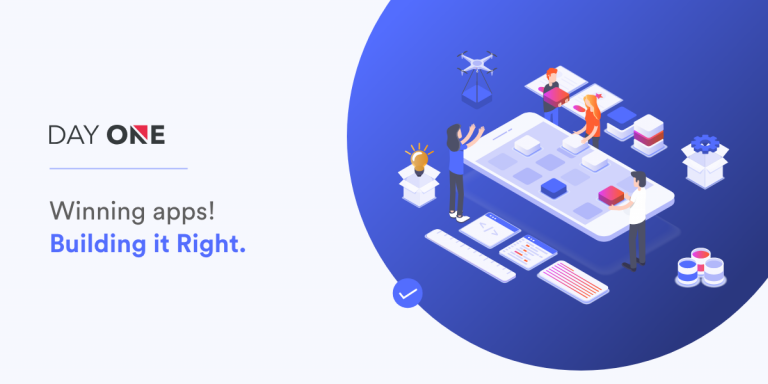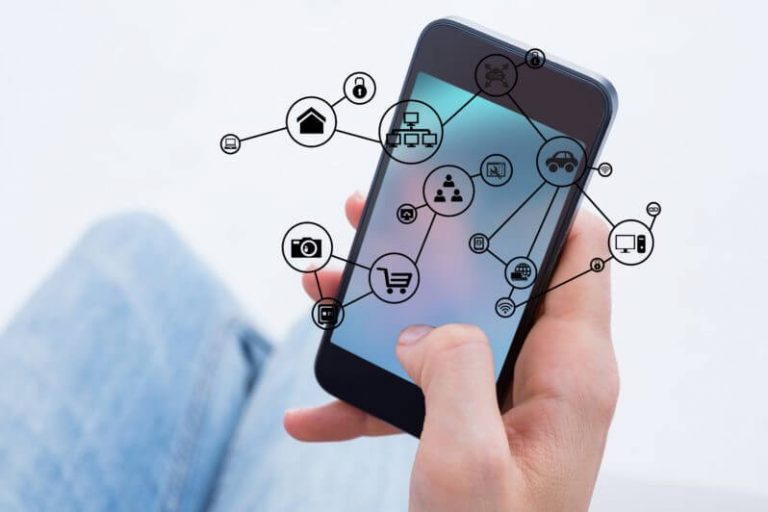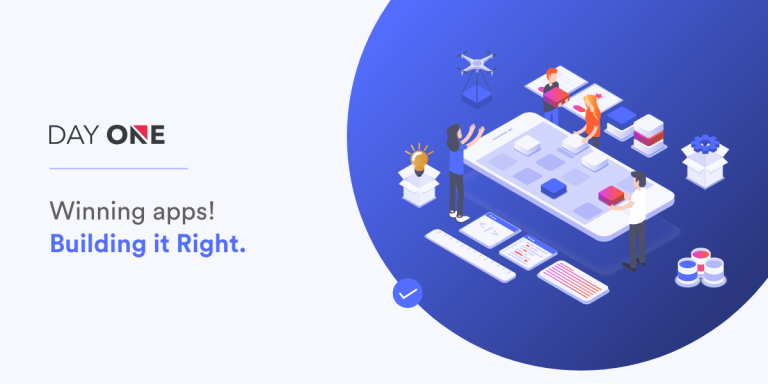
Mobile Applications Much More Than What Runs on Your Device
Mobile applications much more than what runs on your device – Mobile Applications: Much More Than What Runs on Your Device. That’s the core truth we’ll unpack today. It’s easy to think of an app as just that little icon you tap on your phone, but the reality is far more complex and fascinating. Think of the intricate web of servers, databases, and code that hums silently in the background, making your favorite app possible.
We’re diving deep into this hidden world, exploring everything from data privacy concerns to the ingenious monetization strategies that keep these digital wonders running.
From the moment you download an app, you’re engaging with a vast ecosystem. This includes the app itself (the client-side), the powerful servers handling data (the server-side), and the constant flow of information between the two. We’ll dissect the development process, looking at how these components work together and the challenges developers face in creating seamless user experiences. We’ll also explore the critical role of APIs, those unsung heroes that allow different software systems to talk to each other, enabling your app to access maps, social media, and a whole lot more.
The Ecosystem Surrounding Mobile Apps
It’s easy to think of a mobile app as just the software running on your phone, but the reality is far more complex. A thriving mobile application relies on a vast, interconnected ecosystem of services and infrastructure, extending far beyond the confines of your device. Understanding this ecosystem is crucial for developers, businesses, and anyone interested in the inner workings of the mobile world.
Cloud Services, Servers, and Databases
The backbone of most modern mobile applications is the cloud. Cloud services provide the scalable infrastructure needed to handle the demands of millions of users accessing the app simultaneously. Servers act as the central processing units, handling requests from mobile devices, performing calculations, and managing data. Databases, often relational databases like MySQL or PostgreSQL or NoSQL databases like MongoDB, store the persistent data associated with the application, such as user profiles, preferences, and application-specific information.
For example, a social media app relies heavily on cloud servers to handle user interactions, updates, and data storage. Without this infrastructure, the app would quickly become unresponsive and unable to manage the volume of requests. The scalability of cloud services allows apps to grow and adapt to increasing user bases without requiring significant upfront investment in hardware.
Client-Side vs. Server-Side Development
Mobile app development involves two distinct but interconnected processes: client-side and server-side development. Client-side development focuses on the user interface (UI) and user experience (UX) of the application as seen on the user’s device. This involves coding the app’s visual elements, handling user interactions, and managing the local data on the device. Popular client-side frameworks include React Native, Flutter, and native iOS (Swift/Objective-C) and Android (Kotlin/Java) development.
Server-side development, on the other hand, concentrates on the backend logic, data management, and the overall functionality of the application’s server-side components. This involves designing the APIs, managing databases, and ensuring the security and scalability of the application’s server infrastructure. Languages like Python, Java, Node.js, and Go are commonly used for server-side development. The development processes differ significantly, requiring different skill sets and tools.
Client-side development often involves iterative design and testing focused on user experience, while server-side development emphasizes efficiency, scalability, and data security.
The Importance of APIs
Application Programming Interfaces (APIs) act as the crucial communication bridge between the client-side app and the server-side infrastructure. They define how the mobile app interacts with the server, allowing it to request data, send updates, and perform various actions. For instance, a weather app uses an API to fetch weather data from a weather service provider, and a ride-sharing app utilizes APIs to interact with mapping services and payment gateways.
APIs abstract away the complex server-side logic, providing a simplified interface for the mobile app to utilize. Well-designed APIs are essential for the modularity, maintainability, and scalability of the mobile application, enabling seamless integration with various services and fostering a robust and adaptable application architecture. A poorly designed API can lead to performance bottlenecks, security vulnerabilities, and difficulty in integrating new features or services.
Data and Mobile Applications
Mobile applications have become integral to our daily lives, seamlessly integrating into how we communicate, work, and entertain ourselves. This pervasive use, however, comes at a cost: the constant collection, storage, and processing of our personal data. Understanding how this data is handled is crucial for navigating the digital landscape responsibly.Data collection, storage, and processing within mobile applications are complex processes.
Apps gather information through various methods, from explicit user input (like registration details) to implicit data collection (such as location tracking via GPS). This data is then stored, often across multiple locations – on the device itself, in cloud servers, and potentially with third-party data processors. The processing of this data serves various purposes, from personalizing the user experience to targeted advertising and data analysis for app improvement.
User Data Collection Methods
Mobile apps employ a variety of techniques to gather user data. Direct data input, such as filling out forms or providing personal details, is a common method. Indirect data collection involves tracking user behavior, including browsing history, app usage patterns, and location data. Sensors within the device, like accelerometers and gyroscopes, also contribute to the data collected.
Finally, many apps leverage third-party SDKs (Software Development Kits) which can further expand the types of data collected. This often includes data related to advertising and analytics.
Data Privacy and Security Implications
The extensive collection of user data raises significant privacy and security concerns. Data breaches can expose sensitive personal information, leading to identity theft or financial loss. Furthermore, the use of user data for targeted advertising raises ethical questions about consent and transparency. Regulations like GDPR (General Data Protection Regulation) and CCPA (California Consumer Privacy Act) aim to address these concerns by providing users with more control over their data and holding companies accountable for its protection.
However, the constant evolution of technology and data collection techniques requires ongoing vigilance and adaptation.
Types of Data Used by Mobile Applications and Their Purposes, Mobile applications much more than what runs on your device
Mobile apps utilize a wide array of data types to function effectively. This includes personal information (name, email, address), behavioral data (app usage, browsing history), location data (GPS coordinates), device information (model, OS version), and sensor data (accelerometer readings). The purpose of collecting this data varies widely. Personal information is often used for account creation and verification.
Behavioral data is used to personalize the user experience and for targeted advertising. Location data enables location-based services, while device and sensor data are used for app optimization and troubleshooting.
Data Storage Methods Comparison
The following table compares various data storage methods employed by mobile applications:
| Storage Method | Location | Security | Accessibility |
|---|---|---|---|
| Local Storage (e.g., SQLite, Key-Value Stores) | User’s device | Relatively secure if properly implemented, vulnerable to device theft or loss | Only accessible by the app on that device |
| Cloud Storage (e.g., AWS S3, Google Cloud Storage) | Remote servers | Depends on the provider’s security measures; generally high security with proper configuration | Accessible by the app from multiple devices, potentially introducing risks |
| Relational Databases (e.g., MySQL, PostgreSQL) (often cloud-based) | Remote servers (usually cloud) | High if properly secured; depends on database and server security | Requires network connection; access controlled by database permissions |
| NoSQL Databases (e.g., MongoDB, Cassandra) (often cloud-based) | Remote servers (usually cloud) | High if properly secured; depends on database and server security | Requires network connection; access controlled by database permissions |
Monetization Strategies for Mobile Apps
Building a successful mobile app requires more than just a great idea and flawless execution; it needs a solid monetization strategy. Without a plan to generate revenue, even the most popular app will struggle to survive. This post explores various monetization models, associated costs, and a hypothetical strategy for a new application.
Different Monetization Models for Mobile Applications
Mobile apps utilize a variety of methods to generate revenue. Choosing the right model depends on factors like target audience, app functionality, and overall business goals. A hybrid approach, combining multiple models, is often the most effective.
- In-App Purchases (IAP): This model offers users the option to buy virtual goods, premium features, or content within the app. Examples include purchasing extra lives in a game, unlocking new levels, or removing ads. Popular games like Candy Crush Saga heavily rely on IAPs for revenue generation.
- Subscriptions: Users pay a recurring fee for access to premium content or features. This model is ideal for apps offering ongoing value, such as streaming services (Netflix, Spotify), productivity tools, or news aggregators. The predictability of recurring revenue makes this a stable monetization approach.
- Advertising: This involves displaying ads within the app, either through banner ads, interstitial ads (full-screen ads shown between screens), or rewarded video ads (users watch a video to earn in-game currency or unlock features). While relatively simple to implement, relying solely on advertising can result in lower revenue per user compared to other models. Many free-to-play games use this method.
- Freemium Model: This combines a free version of the app with a paid premium version offering enhanced features or removing limitations. This allows users to try the app before committing to a purchase, encouraging conversions from free to paid users. Many productivity and utility apps utilize this strategy.
Costs Associated with Mobile App Development and Maintenance
Developing and maintaining a mobile application involves significant costs, which can vary greatly depending on complexity, features, and platform.
- Development Costs: These include the costs of designers, developers (iOS and Android), project managers, and quality assurance testers. The complexity of the app significantly impacts these costs; a simple app might cost a few thousand dollars, while a complex app could cost hundreds of thousands or even millions.
- Marketing and Advertising Costs: Getting your app noticed requires a marketing strategy, which can include app store optimization (ASO), social media marketing, paid advertising (e.g., Google Ads, Facebook Ads), and influencer marketing. These costs can be substantial, especially for launching a new app.
- Maintenance and Updates Costs: Ongoing maintenance includes bug fixes, performance improvements, security updates, and adding new features. These costs are ongoing and should be factored into the long-term budget.
- Hosting and Infrastructure Costs: If your app relies on cloud services or servers, you’ll need to factor in these ongoing costs. This can include database storage, server maintenance, and bandwidth.
Hypothetical Monetization Strategy: A Fitness App
Let’s consider a hypothetical fitness app called “FitLife.” This app will offer free basic features like tracking steps, calories burned, and basic workout routines. The monetization strategy will be a freemium model combined with in-app purchases.
Revenue Projections (Year 1):
Assuming 100,000 downloads, with 10% converting to premium subscribers at $9.99/month and an average of $5 in IAP revenue per user, the projected revenue would be:
Subscriptions: 10,000 users
– $9.99/month
– 12 months = $1,198,800
In-App Purchases: 100,000 users
– $5 = $500,000
Total Projected Revenue (Year 1): $1,698,800
This is a simplified projection; actual results will vary depending on marketing effectiveness, user engagement, and competition.
Comparison of Monetization Models: Pros and Cons
Choosing the right monetization model is crucial for app success. Here’s a comparison:
| Monetization Model | Pros | Cons |
|---|---|---|
| In-App Purchases | High revenue potential, flexible pricing, can be integrated seamlessly | Can be perceived as aggressive, may alienate users, requires careful balancing of free and paid content |
| Subscriptions | Predictable recurring revenue, higher customer lifetime value, fosters loyalty | Requires consistent value delivery, potential for churn, may not be suitable for all apps |
| Advertising | Easy to implement, low barrier to entry, can generate revenue from a large user base | Lower revenue per user, can be intrusive, may negatively impact user experience |
| Freemium | Attracts a large user base, allows users to try before they buy, good for viral marketing | Balancing free and paid features can be challenging, conversion rates can be low |
The User Experience Beyond the App Interface
The user experience of a mobile application extends far beyond the visual appeal of its interface. Factors like network connectivity, app performance, and even the overall context of the user’s life significantly impact their perception and engagement. A beautifully designed app can be utterly frustrating if it’s slow, unreliable, or simply doesn’t work when the user needs it.
This section delves into the crucial elements that contribute to a positive user experience beyond the screen.
Network Connectivity’s Influence on User Experience
Network connectivity is the unsung hero (or villain) of the mobile app experience. A lack of reliable internet access can lead to frustrating delays, failed transactions, and ultimately, app abandonment. Imagine trying to use a ride-hailing app during a busy festival with limited cellular data; the app might struggle to load, resulting in a poor experience and potentially causing the user to switch to a competitor.
Conversely, a seamless experience relies on consistently fast and reliable connectivity, allowing for quick loading times and smooth functionality, regardless of the user’s location. For apps relying heavily on real-time data, like social media or online gaming, even minor latency can drastically impact usability.
The Role of UI/UX Design in Shaping User Perception
UI/UX design is crucial in shaping the user’s overall perception of an app. A well-designed interface is intuitive, easy to navigate, and visually appealing. It guides the user seamlessly through the app’s functionalities, minimizing cognitive load and maximizing efficiency. Poor UI/UX design, on the other hand, can lead to confusion, frustration, and ultimately, app abandonment. For example, an app with cluttered menus, confusing navigation, or an unappealing visual style will likely turn users away, regardless of its functionality.
Conversely, a clean, intuitive design fosters positive user perception and encourages engagement.
Factors Influencing User Engagement and Retention
Several factors beyond the app’s interface influence user engagement and retention. These include: app performance (speed, reliability, stability); personalization (tailoring the experience to individual user preferences); regular updates and new features (keeping the app fresh and relevant); effective customer support (promptly addressing user issues and concerns); and community features (fostering interaction and engagement among users). A well-designed rewards program, offering incentives for continued use, also significantly impacts user retention.
For example, an app offering loyalty points or exclusive content to active users is likely to see higher retention rates than one that doesn’t.
Illustrative Example of a Positive User Experience
Imagine using a weather app. The app opens instantly, even on a slower network. The forecast for your location is displayed clearly and concisely, with relevant information such as temperature, precipitation, and wind speed. The app also provides hyperlocal information, like warnings for extreme weather events in your specific neighborhood. You can easily share the forecast with friends or family via text message or social media.
The app runs smoothly, without crashes or glitches, and provides regular updates to keep the information current. This is a positive user experience that goes beyond just a visually appealing interface; it’s defined by speed, reliability, and usefulness, demonstrating value beyond the visual design.
Security and Privacy Considerations

Building secure and privacy-respecting mobile applications is paramount. Users entrust their personal data and sensitive information to these apps, making robust security measures absolutely crucial. Failure to prioritize security can lead to data breaches, reputational damage, and legal repercussions. This section will delve into common vulnerabilities, mitigation strategies, authentication methods, and data protection throughout the app lifecycle.
Common Security Vulnerabilities and Mitigation Strategies
Mobile applications are susceptible to various security threats. Understanding these vulnerabilities and implementing appropriate countermeasures is essential for building secure apps. Ignoring these risks can expose users to significant harm.
- Insecure Data Storage: Storing sensitive data like passwords or personal information in plain text is a major vulnerability. Mitigation involves using secure storage mechanisms like Keychain (iOS) or KeyStore (Android) to encrypt data at rest.
- Insufficient Authentication: Weak or easily guessable passwords, lack of multi-factor authentication (MFA), and inadequate session management can allow unauthorized access. Strong password policies, MFA implementation, and secure session handling are vital mitigations.
- Broken Authentication and Session Management: Flaws in the authentication process or session management can allow attackers to hijack user accounts. Implementing robust authentication protocols, secure token management, and regular session timeouts are crucial.
- Insecure Data Transmission: Transmitting sensitive data over insecure channels (e.g., unencrypted HTTP) exposes it to eavesdropping. Using HTTPS and end-to-end encryption for all data transmission is a must.
- Insecure Direct Object References: Directly referencing objects without proper authorization checks can allow attackers to access unauthorized data. Implementing proper access control mechanisms and input validation are essential.
- Cross-Site Scripting (XSS): XSS vulnerabilities allow attackers to inject malicious scripts into the application, potentially stealing user data or manipulating the application’s behavior. Robust input validation and output encoding are critical mitigations.
- SQL Injection: SQL injection attacks allow attackers to manipulate database queries, potentially accessing or modifying sensitive data. Parameterized queries and input sanitization are key preventative measures.
Secure Coding Practices in Mobile App Development
Secure coding practices are fundamental to building robust and resilient mobile applications. These practices encompass various aspects of the development lifecycle, from design to deployment. Neglecting secure coding can introduce vulnerabilities that compromise the security of the application and the data it handles.
Employing secure coding practices requires a multi-faceted approach, including:
- Input Validation: Always validate user inputs to prevent injection attacks (SQL injection, XSS).
- Output Encoding: Encode data before displaying it to prevent XSS attacks.
- Secure Data Storage: Use encryption and secure storage mechanisms to protect sensitive data at rest.
- Secure Data Transmission: Use HTTPS and encryption to protect data in transit.
- Regular Security Audits: Conduct regular security audits and penetration testing to identify and address vulnerabilities.
- Code Reviews: Implement code reviews to identify potential security flaws early in the development process.
- Use of Secure Libraries and Frameworks: Leverage secure and well-maintained libraries and frameworks to minimize the risk of introducing vulnerabilities.
Authentication Methods in Mobile Applications
Different authentication methods offer varying levels of security and user experience. The choice of authentication method depends on the specific security requirements and the target audience of the application.
Common authentication methods include:
- Password-Based Authentication: This traditional method relies on usernames and passwords. While simple, it’s vulnerable to brute-force attacks if passwords are weak.
- Multi-Factor Authentication (MFA): MFA adds an extra layer of security by requiring multiple authentication factors (e.g., password and a one-time code from an authenticator app). This significantly enhances security.
- Biometric Authentication: Using biometric data like fingerprints or facial recognition offers a convenient and secure authentication method. However, it’s important to consider privacy implications and potential vulnerabilities.
- Social Login: Allowing users to log in using their existing social media accounts simplifies the registration process but relies on the security of the third-party provider.
- Token-Based Authentication: Using access tokens to authenticate users offers a more secure alternative to traditional session-based authentication, mitigating session hijacking risks.
User Data Protection Throughout the Application Lifecycle
Protecting user data is crucial throughout the entire application lifecycle, from development to decommissioning. Data protection measures must be implemented at every stage to ensure compliance with privacy regulations and maintain user trust.
Key aspects of data protection include:
- Data Minimization: Collect only the necessary data and avoid collecting unnecessary personal information.
- Data Encryption: Encrypt data both at rest and in transit to protect it from unauthorized access.
- Access Control: Implement strict access control mechanisms to limit access to sensitive data to authorized personnel only.
- Data Retention Policies: Establish clear data retention policies and securely delete data when it’s no longer needed.
- Regular Security Assessments: Conduct regular security assessments and penetration testing to identify and address vulnerabilities.
- Incident Response Plan: Develop and implement an incident response plan to handle data breaches and other security incidents effectively.
- Compliance with Regulations: Ensure compliance with relevant data privacy regulations such as GDPR, CCPA, etc.
Conclusion

So, next time you effortlessly scroll through your favorite app, remember the intricate dance happening behind the scenes. It’s a testament to the ingenuity of developers, the power of cloud infrastructure, and the ever-evolving world of mobile technology. Understanding this bigger picture – the ecosystem, the data, the security, and the user experience – allows us to appreciate the true depth and complexity of the seemingly simple act of using a mobile application.
It’s a world worth exploring, and I hope this post has provided a compelling glimpse into its fascinating intricacies.
Questions and Answers: Mobile Applications Much More Than What Runs On Your Device
What are some common security vulnerabilities in mobile apps?
Common vulnerabilities include insecure data storage, lack of proper authentication, and inadequate input validation, leaving apps susceptible to hacking and data breaches.
How do mobile apps make money?
Monetization strategies vary, including in-app purchases, subscriptions, advertising, and freemium models (offering a basic free version with paid upgrades).
What is an API and why is it important for mobile apps?
An API (Application Programming Interface) is a set of rules and specifications that allows different software systems to communicate and exchange data. It’s crucial for mobile apps to access external services like maps, social media, and payment gateways.
How does user data privacy relate to mobile apps?
Mobile apps collect user data, raising significant privacy concerns. Regulations like GDPR aim to protect user data and require apps to be transparent about data collection and usage practices.





